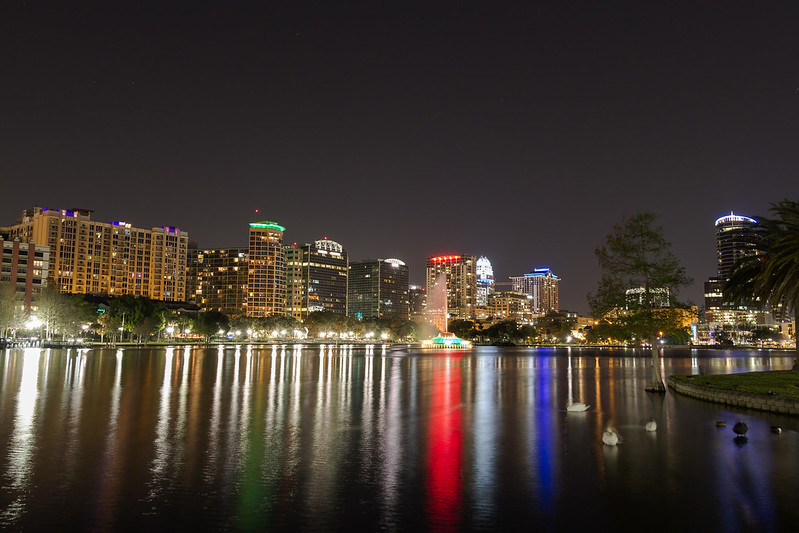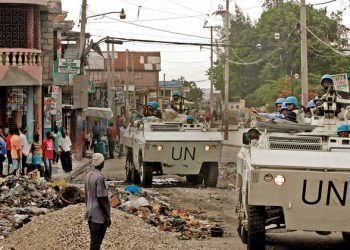For years, city governments in the United States have taken the lead on committing to climate action, with more than 165 cities aiming for 100% community-wide clean energy. But whether ambitious goals translate to ambitious action is another question altogether, and unfortunately we’ve seen cities fall short of their commitments before.
More recently, many cities have also made or intensified commitments to addressing longstanding structural racism. The movements for racial justice and for environmental sustainability are inextricably linked, since communities of color are disproportionately impacted by climate change and have not always benefited from climate and clean energy programs. But as local governments work to center racial justice in planning and services, they need to further both social equity and environmental sustainability.
Environmental sustainability without social equity isn’t sustainable, so authentic inclusiveness must be at the heart of local government planning processes. To avoid the stumbles of the past, governments can best lead through collaboration with frontline communities. At the very least, this means letting the community lead, measuring what matters and implementing programs inclusively.
Hurdles to a Just Energy Transition
Centering equity in city sustainability programs is a welcome development, but it may be easier said than done. Time after time, sustainability programs have tripped over historical injustices and sometimes made inequity worse. Here are a few potential hurdles, created by the way governments have historically done their work, to keep in mind when developing or implementing a clean energy or sustainability program:
1. Planning Ignores or Misunderstands Historical Racial Context
In 2014, a program to offer free street trees to Detroit residents fell far short of expectations when about a quarter of eligible residents declined the offer. Why? Many residents distrusted the government, based on community memories of urban forestry actions from decades earlier that residents took to be racially motivated. To build trust, officials made fundamental changes to the tree-planting program, hiring local citizens as engagement coordinators and involving residents substantively in the planning process.
Government officials and processes often tend to favor technocratic approaches—wherein activities of government to identify problems and design solutions is controlled primarily by an elite of technical experts. Tree-planting is a technocrat’s dream: a single intervention can mitigate urban heat islands, improve air quality, reduce noise pollution and raise property values. But societal problems evolve from messy histories. For example, neighborhoods with poor canopy coverage are often places where racial oppression intersects with every aspect of residents’ lives, making the isolation of a single problem with a single solution impossible. Failure to account for historical context can lead to failure to address fundamental neighborhood concerns.
2. Decision-making Excludes Frontline Communities
The initial planning for Houston’s enormous Bayou Greenways 2020 parks project laudably included an extensive public outreach effort. But its online-only survey in 2014 polled those residents who were easiest to survey, rather than a representative sample of the population, many of whom lack internet access. Predictably, the process failed to give adequate voice to poor and non-white residents: two-thirds of survey respondents were white with household annual incomes greater than $75,000.
Government officials can inadvertently separate sustainability from racial equity when they solicit public input. The people who are most capable of participating — whose economic, educational and linguistic advantages make participation easier — have outsized influence on government actions. Meanwhile, people who lack resources, time, legal status or comfort with government institutions often find their priorities and concerns underrepresented and unaddressed. And for many of these people, these unaddressed concerns speak to how proposed government actions can be influenced by racial oppression.
Houston recognized problems with its Bayou Greenways outreach and re-surveyed the public about a year later, this time using open-ended questions in in-person interviews in English and Spanish. Researchers found that representation clearly mattered for determining project priorities and planning.
3. Programs Distribute Burdens and Benefits Inequitably
While most people are willing to make sacrifices to help their communities, no one wants an unfair share. Perceptions of inequitable burdens can lead to non-participation and even uprisings, such as in the Yellow Vest protests in France. On the other hand, if the rewards of sustainability are unfairly distributed, green projects can exacerbate social inequities. For example, many local programs focused on increasing the use of residential solar energy have used tax breaks and similar incentive mechanisms, which are more likely to be relevant to wealthy, white home-owners with access to the credit and tax equity needed to participate. This has led to unequal distribution of local solar.
How Can Local Governments Promote Sustainability and Justice?
At the intersection of urban sustainability and racial justice there is a useful, powerful concept: government should use its privileged capacity to elevate frontline leadership. And by extension, actions should be designed through centering the needs of frontline communities, those most impacted by racism and climate change.
Government can offer its various forms of capacity — including legal authorities, asset ownership, relationships with business communities, convening power, staff with elite educations, technical expertise, and data and information — to collaborate with frontline communities and organizations and improve the lives of residents. Having this capacity, and the power that comes with it, is a privilege in a democracy with deep inequality. Cities can refocus how they do business on around listening to those residents who have the greatest knowledge of how society and government actions affect the most afflicted and to those organizations with the greatest access to and moral authority with their neighbors.
So, what does this mean in practice?
1. Let Communities Lead
The first task for governments implementing sustainability projects is to proactively recruit leaders from frontline communities. One way to do this is by partnering with existing social justice organizations. In Portland, Oregon, environmental nonprofits provided technical and organizational expertise to the Portland Clean Energy Fund Coalition, a group of six social justice organizations with deep roots in Portland’s communities of color. Frontline leadership played an instrumental role in the successful passage of a package of tax-supported clean energy grants expected to total $44–61 million; BIPOC (Black, Indigenous and people of color) leadership was central to winning trust and endorsements from the public sector and trade unions.
To proactively recruit frontline leaders, local governments should assess and remove potential barriers to participation. That can include consideration of meeting times and spaces, as well as providing childcare, meals, stipends, transportation and interpreters. This process can be a starting point for creating or enhancing relationships with community and social justice organizations.
Frontline residents and leaders may not speak and think in the same terms as city staffers, and some orientation and translation may be required. It can be useful to ground technical discussions in narratives and lived experiences to build common vocabularies out of various cultural and technical reference points, and to be ready to be flexible about timelines and project goals. Most importantly, governments need to listen openly and honor community expertise.
2. Measure What Matters to People
A key role for frontline leaders is to guide the community to define meaningful indicators for success — for evaluating future clean energy scenarios, for evaluating program success and for evaluating the processes to achieve success. One of government’s roles is to provide timely, reliable data and modeling, and to make data and model outcomes accessible to the community. But indicator definition, scenario development and evaluation, and model validation are all tasks that intersect with community values and priorities, so these roles belong to the community.
The City of Orlando developed its 100% renewable energy plan after a series of data-rich community engagements. Orlando staffers worked with Greenlink Analytics to produce data visualizations and maps designed to be easily understood and enable open, substantive discussion with community residents. The maps go beyond standard energy indicators and include equity dimensions such as energy burden (the portion of household income spent paying for electricity and gas bills), making visible city-wide inequities in poverty and energy costs and enabling further conversation on ways to focus future city programming in frontline communities.

A utility burden represents the percentage of annual income that a household or individual pays toward their utility bills (electricity, natural gas, and/or water). This map is taken from an interactive dashboard of Orlando’s utility burden developed by Greenlink Analytics.
3. Implement Programs Inclusively
Program implementation is where the rubber of a sustainability plan meets the road of impacts in the lives of residents. Policy selection, roll-out design and financing decisions all influence the final distribution of program benefits and can therefore spark important debates about fairness amid the tension between equality and equity. Because an equitable implementation plan could be vastly different from the status quo, it might feel starkly unequal.
Scenario assessment and policy prioritization, traditionally the purview of technocratic planners, should be led by the people with the greatest stakes in the outcomes. In a set of community engagement sessions, Orlando’s planners presented visually simple (but analytically sophisticated) clean energy calculators. The calculators enabled residents to translate energy efficiency, solar power and EV adoption targets into greenhouse gas emissions expressed in terms that would be meaningful to residents: bill savings, job creation and public health.

Orlando Clean Energy Future Tool (Greenlink Analytics, 2019)
Centering climate and energy planning on racial justice is no small task, with numerous obstacles in local governments’ paths to equitable energy policy and program design. But by applying governments’ capacities to empower frontline leadership, city staff can start to flip the script on typical planning conversations and build trust with frontline communities.
This post was developed as part of the Broadly Beneficial Clean Energy Planning project, which provided a training series on equitable clean energy planning in U.S. cities and produced data and scenarios on energy equity for 12 cities. WRI has also recently produced guidance for cities on Inclusive Climate Action Planning.



